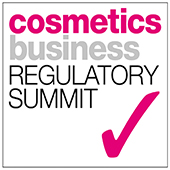This is a series of articles based on information from the 3rd edition of the 2016 Cosmetics Business Regulatory Summit. The event focused on regulatory challenges for cosmetics manufacturers including the embattled substances issue.
Alan Ritchie from WSP Group discussed ‘The future of sustainability in the cosmetics industry with substance attrition threatening raw material availability’. Raw material availability, he told delegates, is impacted by several drivers, including regulatory ones and external drivers, such as consumer perception and animal welfare concerns. A substance may become ‘embattled’ as a result of genuine safety concerns and/or if it becomes a ‘cause célebre’ through the attention of green NGOs and the media.
Ritchie held the preservatives business up as the victim of a “quadruple pincer movement” in which concerns about safety leading to voluntary and mandatory restrictions or prohibitions, difficulty in bringing new preservatives to market because of animal testing restrictions, the burden of REACH registration and the high costs of supporting substances through the Biocidal Products Regulation resulted in a lack of effective preservatives for use in cosmetics in the EU.
He noted that there is no one-size-fits-all solution to managing business in the midst of substance attrition and bad publicity, but to stay ahead of the game he recommended that cosmetics manufacturers should know what’s available, look for alternatives, put a raw material approval system in place, avoid knee-jerk reactions, find a good consultant, manage the media where possible and build strong relationships with NGOs and the media.
Sourcing organic bees wax
KahlWax’s Martina Heldermann, meanwhile, discussed the challenges surrounding the effective sourcing of beeswax.
Commonly used in the cosmetic and pharma industries, demand for Cera alba is rising due to the growing population and industrialisation of developing countries, meaning there is uncertain availability of beeswax. As a result, prices are climbing and unscrupulous vendors are selling low price product claiming high purity.
To obtain double refined beeswax, the crude wax is filter pressed, bleached and then filter pressed again. Crude-beeswax importers into the EU have to be registered, and must declare the origin and quality of wax – including a description and verification of the refinement process. There are three grades of wax, with pure (white or yellow) cosmetic grade wax, which has been chemically or physically bleached, being the most commonly used in the beauty industry. Pure organic wax should come from beehives with no pesticides used in a 50km radius and bleaching must only be via a physical process.
he natural chemical composition of beeswax should include 10-20% paraffins; paraffin content is a indication for the quality of wax. However, as Heldermann told delegates, some crude wax suppliers add 5-10% more paraffin to create the illusion of higher quality wax.
There are also other potential impurities. For example, the more aggressive wild bees used in the production of African beeswax need more smoke to reduce their instinct to sting. But in less wooded areas, beekeepers burn old car tyres to create this smoke, the chemicals from which are found in crude beeswax, although these can be eliminated with proper filtration, Heldermann added.
Another issue is pesticides. This includes those used to protect crops against vermin, those used to protect the bees against pests and parasites, and insect repellent, which can contaminate the wax if beekeepers use old mosquito nets to filter coarse impurities.
Worryingly, there is no official legislation concerning pesticides content in beeswax, only those for organic certification. Heldermann warns that there is a growing volume of beeswax entering the cosmetic industry pretending to be organic certified but actually loaded with pesticides and of inferior quality. She recommended manufacturers double check the supplier’s organic certificate and request a complete pesticide analysis for every batch received.

All topics covered at the Cosmetics Business Regulatory Summit, including cosmetics packaging regulations, SPF testing, key African markets, Brazil, Middle East and compliance for SMEs will be covered in separate articles.
